|
We're back with another Shocker this week and it's an interesting one that often goes overlooked by fans just a decade on, yet at the time it was a huge surprise and gave one the top Flyweights of the modern era a second chance to shine at the top of the division. It was, at the time, one of the most surprising results, and is still a huge shock when we look back at the results from 2010. Date March 27th 2010 Venue Ariake Colosseum, Tokyo, Japan Fighters Koki Kameda (22-0, 14) Vs Pongsaklek Wonjongkam (74-3-1, 38) Going back just over a decade now the Kameda brothers were the big story in Japanese boxing. Daiki Kameda and Koki Kameda were two of the biggest names in Japanese boxing and their younger brother, Tomoki, was starting to generate some buzz as a fighter in Mexico. The trio were regarded as the future of Japanese boxing and Koki was really looking like a star. He was a man who had strong support in Japan and also had enough haters in the country to have fans wanting to see him get beat. He was un-Japanese in many ways. He wasn't humble and respectful, but instead a loud mouth and someone who seemingly got his attitude from professional wrestling, rather than the roots of Japanese boxing culture. At this point he was 23 years old and had seemingly found his weight, having put in a solid, if dramaless, performance to beat Daisuke Naito for the WBC Flyweight title. A title he was expected to hold until he eventually out grew the weight. Kameda's first challenge as the champion was a mandatory defense against Thai veteran Pongsaklek Wonjongkam. The Thai veteran was a legendary fighter by this point, but was assumed to be past his best. In fact at 33 and with almost 80 bouts to his name it was though he was losing to father time. He had lost the WBC title in July 2007 to Daisuke Naito and had failed to recapture the title in a rematch, their 4th bout, when the bout ended in a split decision draw. That loss to Naito had come almost 3 years before this bout and in the interim his only win of Note was an "interim"title fight against Julio Cesar Miranda. At his best Wonjongkam was something special. He was an under-rated puncher, as Malcolm Tunacao and Daisuke Naito would attest to, but also a talented boxer, who knew how to use the ring, he was smart and well schooled. At 33 years old however he was ancient for a Flyweight, and was the clear under-dog against the rising star of Japan. Not only was Wonjongkam seen as old but was also up against things, travelling to Japan for the bout. Whilst judging in Japan for bouts like is done, typically, by neutral judges, it was still assumed that the atmosphere and occasion would still sway the judges to favour the unbeaten Japanese champion. Afterall, it had happened in the past, when Kameda beat Juan Jose Landaeta for the WBA Light Flyweight title in 2006. From the off Wonjongkam pressed forward, taking center ring and being the aggressor whilst Kameda got on the back foot, circled on the outside of the ring and didn't really let his hands go much. When Kameda did open up he looked much quicker, but for much of the round seemed happy to be very conservative and negative, rather than making his youth count. There was very few in and out raids and he looked to be more focused on making Wonjongkam miss, rather than landing anything himself. The same pattern also seemed to be seen in round 2, though Kameda was certainly caught cleaner in the second than he had in the opening round and seemed to be holding on after a good single shot. Kameda seemed to be off to a bad start and he really struggled to get things going. He was much quicker, but much more timid than Wonjongkam, who was doing enough to wins rounds, without doing a lot. His 33 year old legs weren't being forced to work hard, he wasn't needing to mov through the gears nor was he ever being backed up by Kameda who used a tactic that would become rather a regular thing with him. Ultra negativity. In round 5 however Kameda did get a break, as the WBC's accidental foul rule saw Wonjongkam being deducted a point after a head clash. It was however scant consolation for Kameda who still seemed like he hadn't woken up or realised he was being out boxed by a 33 year old who seemed to be fighting a reserved fight himself. Thankfully after being cut, by the headclash in round 5, Kameda seemed to finally come awake. It was as if he was pissed off by feeling blood trickling down his face. Unfortunately Kameda really didn't keep his foot on the gas for long, and by the end of the round it was hard to give it to the local star. Kameda did however show more ambition in the middle portion of the fight, and made a legitimate attempt to swing things in his favour in rounds 7, 8 and 9. His best rounds. Amazingly after 8 rounds one of the judges some how had Kameda leading, 76-75. The other two judges had it 77-75 and 77-74 to Wonjongkam. After having a few solid rounds it seemed like Kameda was turning the bout around and, at last, making Wonjongkam work at an uncomfortable tempo. He was starting to push around the old man, who had gotten off to an early lead but was going to have to see out the second half of the bout. Amazingly however Kameda let the momentum slip away from him. Rather than keeping up the work rate he had shown after the midway point, and fighting in short but eye catching bursts, he went back to being negative and let the play slip away. It was similar to what we would become accustomed to over the years that followed from Kameda, who showed touches of genius, but lacked a champions mentality. Instead of Kameda keeping the charge going and trying to pull the bout his way, he got negative again, waiting to counter punch Wonjongkam, who because of his own low output gave Kameda very few opportunities. Kameda managed to have moments, but there was nothing sustained and a good shot from Kameda was never followed up, with Wonjongkam managed to occasionally string his shots together. Even when it was very clear Kameda needed to do a lot more, he didn't. He made no effort to turn the bout around in the championship rounds. He was happy cruising, in the hope that the judges would some how find a way to score the rounds his way. It wasn't to be. After 12 rounds we went to the scorecards. 114-114, 115-112 and 116-112. A majority decision...that went to Wonjongkam. It was the right call, even if Predrag Aleksic's even scorecard was one that left much to the imagination. The bout was never one that could have been scored even. After this bout Wonjongkam went on a solid but short second reign, beating Suriyan Sor Rungvisai, Takuya Kogawa, and Edgar Sosa before losing to Sonny Boy Jaro in 2012 before retiring in 2013. Kameda on the other hand would win WBA secondary honours at Bantamweight, becoming a "3 weight world champion" in the process, and later clash with Kohei Kono in a bout for the WBA Super Flyweight title, before retiring in 2015. Remarkably in 2018 these two men got back in ring together for an exhibition which saw Kameda beat up the then 40 year old Wonjongkam in a bout the JBC refused to sanction as a professional bout. By then however it was clear Kameda just wanted a swansong to retire for good on, whilst Wonjongkam was likely happy for an extra payday as part of an exhibition event, even if he did get knocked out.
0 Comments
This week's "What a Shock" is one from an historical bout that was a genuinely thrilling bout, but saw the bookies get it very, very wrong... along with a referee who wanted to play his part in an historic occasion. Kohei Kono (30-8-1, 13) Vs Koki Kameda (33-1, 18) In 2015 we saw the first ever All-Japanese world title fight to take place in the US, as WBA Super Flyweight champion Kohei Kono travelled over to Chicago to take on mandatory challenger Koki Kameda. The bout was a politically confusing mess, due to the fact Kameda was banned in Japan due to a licensing situation with the Japan Boxing Commission, but was able to box away from home. As a result Kono went on the road, for his first bout away from home. Coming in to this Kameda was the clear betting favourite, priced at 1/9 to win and become the new champion. He was already a former world champion at Light Flyweight, Flyweight and Bantamweight, albeit only the WBA "regular" champion at Bantamweight. He had been a huge name in Japan, and along with his brothers Daiki and Tomoki the Kameda's had been stars at home. Controversial stars, admittedly, but still big names. Although he was the favourite Kameda really hadn't looked good in recent bouts. At Bantamweight his struggled against pretty much anyone. His power wasn't enough to keep fighters honest and his work rate lacked. It was however assumed that Super Flyweight was going to be a weight well suited to him, and against Kono it seemed that Kameda had a lot of advantages. Kameda was 28, he was naturally quicker than Kono, he was a southpaw and he was fighting outside of Japan for the 5th time. Kono on the other hand was a 34 year old dubbed the "Tough Boy", technically Kono was never an outstanding boxer. He was however an excellent fighter, who rugged, had a great work rate and always came to fight. Against movers he struggled, and he could be out boxed, but few were going to win in a rough house fight against him. On paper his style was made for Kameda, who was a good mover with fast hands and a tight guard. Although Kono had 8 losses to his name they had, typically, been at world level and 7 of his 8 losses had come before he had won a world title. Although he was a gutsy, brave, aggressive fighter, Kono's limitations had long been known about. If you moved, used your feet, and had good speed you should be able to beat him. If you tried to have a tear up with him it was going to be a toss up. Amazingly Kameda selected to have a war with Kono. From the opening stages the bout was being fought at close quarters and this was a very different type of fight to many of Kameda's bouts at 118lbs, where he sat back. This worked well in the opening round with Kameda's aggression and speed being far too much for Kono through the first 3 minutes. In round 2 however it began to turn around with Kono having the success in a rather dramatic and action packed round. The round saw Kameda land a number of low blows, with Kono going down from a series of them, and being given time to recover. Only seconds after the bout resumed Kono dropped Kameda with a straight right hand down the pipe. From there on the bout became an all action war, with Kono's pressure forcing the action and dragging Kameda into a brawl. Kameda was deducted 2 points in round 3 for repeated low blows whilst the action continued to heat up due to Kono's pressure. Referee Celestino Ruiz was really involving himself in the action, but that didn't really change the tempo of the fight, which was dictated by Kono. Not only was he dictating the action but by the start of round 4 Kono was already in a comfortably lead, thanks to the knockdown and the two deductions from Kameda. The momentum of Kono continued to press and pressure and force the fight with Kameda left to try and respond, despite being in a hole. Round 5 was a really good back and forth round as the two fighters traded shots on the inside. It was a much better round for Kameda than the previous 3, and began a good rally from the Osaka, who also seemed to do enough to take round 6. He had began to find his rhythm, used his hand speed well, tightened his guard and countered well, forcing Kono back at times. The momentum then swung backward to Kono who won rounds 7 and 8 before being deducted a point himself in round 9 for pushing Kameda down. By then it seemed immaterial to the scoring, Kono was in a comfortable lead and Kameda, who had scored 1 stoppage in his last 6, needed a KO...against a man who had never been stopped. Instead of Kameda going for the stoppage we actually saw Kono dominate after his deduction in round 9, our working, out punching and out battling Kameda in the championship rounds. With the bout going the distance Kono ended up taking a unanimous decision, with scores of 116-108, 115-109 and 113-111, a score that is truly appalling. With the win Kono not only retained the WBA Super Flyweight title, scoring the second of 3 successful defenses during the ring, scored a major betting upset, and also sent Kameda into retirement. Kameda did continue to be involved in the sport, and held some exhibition style events including one against Pongsaklek Wonjongkam, but never again fought as a professional. As for Kono he went 2-4 after this bout, losing to the likes of Naoya Inoue, who stopped him in 6, Rex Tso, in an under-rated classic, and Jason Moloney, before retiring with a 33-12-1 (14) record. The bout, although a fantastic 12 round battle fought at an excellent pace on the inside, was marred by a referee who didn't speak the same language as either fighter. He also tried to over-control the fight, which probably actually needed a Japanese referee, for both language issues and styles issue with Japanese fighters typically allowing more inside work than Western referees. Despite that no one can take away a career defining for Kono and a bout that was a massive upset. We've all heard of Six Degrees of Kevin Bacon, and we've decided to put our spin on things with "Six degrees of separation" looking to connect Asian fighters you may never have assumed were connected! Today we connect former multi-weight world champion Koki Kameda to fellow multi-weight world champion Nonito Donaire.
Just as ground rules, we're not doing the more basic "A beat B who beat C who beat D" type of thing, but instead we want to link fighters in different ways. As a result we will limit A fought B connections, and try to get more varied connections together, as you'll see here! We also know there are often shorter routes to connect fighters, but that's not always the most interesting way to connect them. 1-Japanese star Koki Kameda was born in November 17th 1986 on that very same day Tomohiro Kiyuna defeated Katsumi Komiyama, in what was Kiyuna's first bout since losing in a WBA world title fight to Myung Woo Yuh in South Korea. 2-Although a very solid fighter Tomohiro Kiyuna was never able to win a world title. He did however become a multi-time Japanese Light Flyweight champion, winning that title 3 times during his career. That's actually a record for that particular title and only Kiyuna, his former foe Hideyuki Ohashi and Kenichi Horikawa have held that title more than once. 3-Japanese fighter Kenichi Horikawa will never go down in the history books are one of the Japanese greats, but there is no doubting his role in Japanese boxing, and he's one of the very, very few Japanese fighters in the modern era with more than 40 wins. His career saw him face a genuine who's who of not just the Japanese scene but also the Asian scene. His opponents included hard hitting Filipino Florante Condes in 2010. 4-The hard hitting Florante Condes was the IBF Minimumweight world champion for almost a full year, though sadly never managed a single successful defense of the title. He won the belt on July 7th 2007, on the same day as Condes's world title win we also had the professional debut of Carlos Linares, who stopped Mosa Chatchawan at Korakuen Hall. 5-Although not as well known as his brother Jorge, Carlos Linares is a very notable figure in Japanese boxing. Fans will likely know him best for his incredible Japanese Middleweight title fight with Tadashi Yuba in 2012, or maybe even know him as the trainer for Ryota Murata. Incidentally he actually made his US debut in 2011 on a show that was headlined by Toshiaki Nishioka, who defeated Rafael Marquez at the MGM Grand. 6-Sadly by the time the wider boxing world was aware of Toshiaki Nishioka he already had a foot out of the door This meant many Western fans weren't aware of the great career Nishioka had had. These had included a brilliant 4 fight series with Thai legend Veeraphol Sahaprom and wins against the likes of Jhonny Gonzalez. As a result many fans in the West only saw a handful, if that, of Nishioka bouts including his final career bout, in 2013, against Filipino great Nonito Donaire. (Images courtesy of JPBA and Boxmob) We've all heard of Six Degrees of Kevin Bacon, and we've decided to put our spin on things with "Six degrees of separation" looking to connect Asian fighters you may never have assumed were connected! Today we connect legendary Filipino Little Dado to controversial Japanese fighter Koki Kameda.
Just as ground rules, we're not doing the more basic "A beat B who beat C who beat D" type of thing, but instead we want to link fighters in different ways. As a result we will limit A fought B connections, and try to get more varied connections together, as you'll see here! We also know there are often shorter routes to connect fighters, but that's not always the most interesting way to connect them. 1-Eleuterio Zapanta, better known as Little Dado, was a Filipino boxer who fought in the 1930's and 1940's running up a brilliant 70-6-11 (22) record. One of his main rivals was fellow Filipino Little Pancho. The two men fought a reported 7 times, with Pancho winning their series 3-2-2. Amazingly these two "Little" men battled 4 times in 1936 alone! 2-Whilst not a huge name in the sport's history Little Pancho was part of a notable boxing family. He was the half brother of the legendary Pancho Villa, one of the greatest Filipino fighters of all time. Pancho Villa was the first Asian boxing star, winning the Flyweight world title in the 1920's, and was one of the very few Asian fighters to make a major mark on the sport before World War II. 3-A song named "Pancho Villa", named after the Filipino great, was featured in the 2003 album "Ghosts of the Great Highway" by American quartet Sun Kil Moon. Villa was one of a number of fighters to have songs named after him on the album with another being tragic Korean fighter Deuk Koo Kim. 4-Whilst Deuk Koo Kim is best known for his sad, and tragic, loss to Ray Mancini it can often be very easy to forget the success he had before facing Mancini. That had included him holding, and defending, the OPBF Lightweight title. Another man to hold that title was often forgotten Indonesian fighter Adrianus Taroreh, who held the title in the 1990's before losing in a world title fight against Orzubek Nazarov in 1996. 5-Sadly Adrianus Taroreh passed away in 2013, at the tragically young age of 46. Prior to even turning professional he was a well regarded boxer and in 1989 he won a gold medal at the South East Asian games in Malaysia. Taroreh took his gold at 60KG's whilst 12KG's lighter fans in Malaysia saw Chatchai Sasakul win gold. 6-In 2008, almost 20 years after winning gold at the South East Asian Games, Chatchai Sasakul fought in his final meaningful bout. That saw him losing in 3 rounds to brilliant Mexican fighter Cristian Mijares in a WBA and WBC Super Flyweight title bout. On the undercard for Sasakul's loss to Mijares was Japan's Koki Kameda, who scored his 19th professional win as he took a decision over Salvador Montes. 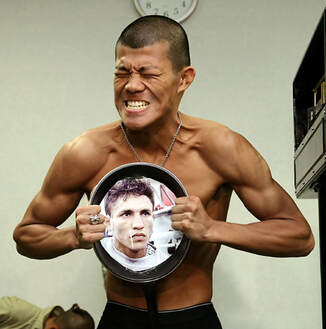 If we're being honest the weigh in for a fight is rarely interesting. Whilst there are exceptions to this rule, usually when the fighters decide to throw punches at each other the day before their actual bout, those exceptions are few and far between. Today however we're going to discus one interesting weigh in from 2006. The weigh in didn't get much attention outside of Japan, but was certainly got the Japanese fans and media talking. In May 2006 Koki Kameda (then 10-0, 9) was taking on Nicaraguan Carlos Fajardo (then 15-6-1, 10). Fajardo had been reportedly struggling to make weight and rather than keeping his mouth shut about the situation Kameda used it as a chance to promote himself, and the fight. At the press conference a few days before the fight Kameda was eating and drinking, mocking Fajardo's weight issues. It was clear he was trying to get into Fajardo's head, and had no problems with making the weight himself. In fact the bout was at Flyweight, a weight that Kameda really did make very easily at the time and would later move down from, dropping to Light Flyweight. Fajardo on the other hand looked gaunt and like he really was taking a lot out of himself to make 112lbs. He had fought as low as Minimumweight but hadn't fought in almost a year coming into this bout, and had seemingly been coming to the end of his career. Having really mocked Fajardo at the press conference we then moved on to the weigh in and Kameda continued playing mind games. Rather than just getting on the scales and off, and putting weight back on for their bout Kameda had one more trick to play on May 4th, the day before the weigh in. Unbeknowst to most at the weigh in he had brought along a pan with an image of Fajardo's face on it. He then proceeded to bend the frying pan in front of the press, showing off his strength and making it clear he was going to crush the Nicaraguan. Both men made weight, with Kameda hitting the scales at 112lbs and Fajardo weighing in at 111¾lbs, but the weigh in was more about the frying pan incident than the men making weight. When the men got in the ring the bout proved to be a mismatch, with Kameda stopping Fajardo in 2 rounds. The Nicaraguan might have made weight but still looked drained and weak in the ring and was no competition for Kameda. Rather interestingly the whole frying pan story got an extra twist this year, with Shiro Kameda, Koki's father, appearing on TV in Kansai and revealed some details about Koki's pre-fight actions. Not just for this bout but others. For this he revealed that the that whilst the frying pan looked solid it was an incredibly cheap pan, that cost around 100yen, it was soft, and that anyone could have done it. That however didn't take away from the attention Kameda got for pulling the stunt way back in 2006. Few Japanese fighters have ever split opinion like Koki Kameda. The flamboyant, arrogant, cocky, confident, attention grabbing, headline stealing fighter knew how to get attention and how to benefit from having fans and haters. He seemed to know that having fans want to see him lose was just as valuable as fans wanting to see him win.
Although a lot is known about Kameda a lot isn't, so today we bring you 10 facts you probably didn't know about... Koki Kameda 1-Prior to turning to boxing Kameda had originally taken up karate at the age of 4, then went into boxing at the age of 11 and quickly made his mark, taking part in a televised exhibition with former world champion Hiroki Ioka. As an amateur Kameda went 16-1 (12) and won the All Japan Championships as a teenager. 2-In April 2005 Kameda transferred from the Green Tsuda gym to the Kyoei Gym. The transfer cost a reported ¥30,000,000 (around $300,000) 3-Kameda's first 8 opponents were all Thai, and he didn't face a single Japanese opponent until his 22nd bout, when he fought Daisuke Naito. By that point he had faced opponents from Thailand, Venezuela, Mexico, Nicaragua, Indonesia, USA and the Philippines. In fact during his entire career he only face 2 Japanese foes Naito and Kohei Kono. 4-Kameda was dubbed the "Naniwa no Token", or the "Fighting Fist of Naniwa", with Naniwa being old name for what is now Osaka. Haters and detractors in Japan did however tweak it to make it the "run-away dog of Osaka" 5-The original opponent for Kameda's March 8th 2006 bout wasn't Carlos Bouchan, but instead Edgar Sosa. The bout, Kameda's 10th as a professional, saw Sosa pull out on February 14th with a hand injury. Interestingly Sosa would fight just 3 weeks later, beating future world champion Gilberto Keb Baas. 6-Kameda's 2009 bout with Daisuke Naito had an average TV rating of 43.1%. That was impressive by any standard, but the peak rating actually went up to 51.2%, the highest peak rating of any show on Japanese TV in 2009! The average rating is higher than that of any other all-Japanese world title bout in history. Despite splitting opinion Kameda was, for years, a huge ratings hit for TBS in general and a number of his fights peaked at over 30% of the Kanto region 7-Kameda's final defense of the WBA "regular" Bantamweight title in 2013, which saw him beat Jung Oh Son, used 1/2 point scoring, and due to it being held in Korea and being held later than usual for televised bouts in Japan the scores hadn't been collated by the time the bout went off the air on TBS. Due to that the actual result wasn't known in Japan until the news report that followed the airing of the fight. 8-Whilst it's well known that Koki and brothers Daiki and Tomoki are fighting brothers the family's boxing connections are much bigger than that. With their sister, Himeki Kameda, and their cousin, Kyonosuke Kameda, also being professional fighters. 9-Kameda has a credited role as an actor in the 2010 movie "BOX!" (also known as "Bokkusu"). 10-On May 7th 2017 Kameda took part in a special event on streaming service AbemaTV, essentially titled "10,000,000 yen if you beat Koki Kameda". It was a special event that saw Kameda fight against 4 opponents in a single event. The show was a huge success for AbemaTV, so big in fact that it crashed their servers with over 14,000,000 people tuning in. Interestingly one of the fighters that Kameda faced, "Joe Blog", would later make his professional debut on a Kyoei promoted card put together by Kameda. Extra fact 1 - Kameda's 2015 bout with Kohei Kono is the only time an all-Japanese world title fight has taken place on US soil, with the bout being fought in Chicago. Extra fact 2 - Kameda is a published author, with 2 Japanese books available with Kameda listed as the author. "Koki Kameda declares war" and "It's so Strong". We continue this series looking at little stories from the Eastern boxing scene by bringing you a really famous one which took place in Osaka between a former champion and a future world champion, which took place way back in 2000. At the time the future world champion was just a teenager, but would later go on to become on of the most controversial fighters in Japan. The other man involved was only 34, but he had retired following a loss in 1998, which made him decide his career had gone on long enough. Unlike most stories this one isn't shrouded in mystery or myth. In fact this was caught on camera, and it certainly seems like their was some more to it than a staged event, despite being part of a documentary. In fact it very much looked like a teenager getting the better of a former world champion and beating him up a bit, whilst making the most of an opportunity to make a name for himself. The youngster in question was Koki Kameda, who at the time was 14 or 15 when TBS's cameras were following him and his father, and Koki's brothers Daiki and Tomoki. The TBS cameras were recording a documentary and part of that saw Kameda having an exhibition with former WBC Minimumweight and WBA Light Flyweight world champion Hiroki Ioka. Although Ioka was only 34 at this point he had had a long career and had retired following a stoppage loss to Masamori Tokuyama, the 5th stoppage loss of Ioka's career. He had fought 42 times as a professional from 1986, when he was just 17, to 1998, and had fought in 13 world title bouts. Ioka had himself been a young prodigy, and still holds the record for the youngest Japanese world champion, a record that has stood for over 30 years! The exhibition, fought in front of a live crowd, saw Kameda starting aggressively and being all over Ioka, who looked very much like a man who had seen better days, and not someone who was expecting to have the youngster all over him. Early on Ioka looked tired and Kameda was going as far as to taunting the former champion. With a live crowd in attendance Kameda, who had spent the first round with headgear on, removed the headgear and continued to look too aggressive, too good and too quick for Ioka, who looked clumsy and old. Even when Ioka did have moments he seemed to struggle with the footwork of Kameda who showed a lot of defensive ability and a smart boxing brain. For those that haven't seen this before we have include the full documentary below, with the exhibition starting around 16 minutes into the video. Given what Kameda would go on to do, this was a great glimpse at his ability, and with it being shown on TBS this was a huge opportunity for the youngster to shine. He took that chance and made the very most of it! The second in our "Top 5 Wins" features looks at another modern icon, as we look at Thai great Pongsaklek Wonjongkam (9-15-2, 47). The Thai is a criminally over-looked fighter who is often remembered unfairly as a fighter who only fought in Asia against weak opposition, but the reality is that he fought a lot of fighters who were a lot better than fans realise. In fact of the men he beat numerous ones went on to win world titles in the years that followed, and the way he essentially monopolised the WBC Flyweight world title in the 00's and early 10's is incredible. So lets have a look at the 5 top wins of Pongsaklek Wonjongkam. 5-Suriyan Sor Rungvisai (October 28th 2010) In Pongsaklek's first defense of his second reign he took on the then 14-3-1 (4) Suriyan Sor Rungvisai. At the age of 33 Pongsaklek was seen as being on the way out, and although Suriyan hadn't made his mark on the sport by this point, something he would do impressively in the coming years, though the then 21 year old left a great impression here. Pongsaklek was pushed all the way by a talented, tough, determined foe who came of age. Suriyan would put up an amazing effort, using his youth, energy and toughness. The challenger even threw up at one point yet still continued to press and push Wonjongkam in a bit of a forgotten classic. This was a great fight, a hotly contested battle and in many ways the start of the end for Wonjongkam, who would only defend the WBC title 3 more times. It was also a bout that put Suriyan on the map, before he won the WBC Super Flyweight title 4-Edgar Sosa (October 21st 2011) A year after beating Suriyan we saw Pongsaklek take on excellent Mexican fighter Edgar Sosa. Sosa was 43-6, 2 years younger than Wonjongkam, a former long reigning Light Flyweight champion and a very, very good fighter. He had lost just once in his previous 32 bouts, and that was a very controversial loss to Rodel Mayol, on paper this looked a huge ask for the the ageing Pongsaklek, and Sosa was in great form. What we ended up seeing here was Pongsaklek out boxing, out thinking, out moving and out fighting the Mexican in what turned out to be one final great performance by Pongsaklek. Amazingly this would be his last win at world level. Sosa on the other hand remained a contender until quite recently, losing to Roman Gonzalez in 2015 and Donnie Nietes in 2016. 3-Malcolm Tunacao (March 2nd 2001) Of course the win that puts a fighter on the map always belongs on any top 5 list, and that's exactly what we got when Pongsaklek took on WBC Flyweight champion Malcolm Tunacao in 2001. The unbeaten Tunacao was 11-0-1, 7, and had taken the title the previous year with a TKO win over Medgoen Singsurat and had made a defense in Japan against Celes Kobayashi. For Pongsaklek this was supposed to be the first real test, the first time he was facing someone of known quality and the first time the then 23 year old Thai was supposed to be in there with a top quality opponent. Pongsaklek made this look incredibly easy, surprisingly so in fact, as he dropped the Filipino champion just over a minute into the fight and set an incredible all out tempo. Tunacao got to his feet but was dropped a second time not afterwards and then dropped again. He was done within a round. This win kicked off a great reign for Pongasaklek and was one of only 2 career stoppages for Tunacao, the other coming more than 12 years later, in 12 rounds to Shinsuke Yamanaka. This was a huge win, and an incredibly impressive one when we look back over out. 2-Koki Kameda (March 27th 2010) After losing the WBC Flyweight title to Daisuke Naito in 2007, in their third bout, it seemed like Pongsaklek was on his way out. He was "only" 29 at the time but had had 65 bouts and seemed to be on the slide. Over 2 years later however Pongsaklek would become a 2-time world champion, upsetting the then 22-0 Koki Kameda in a notable upset win. Kameda had been one of the stars of Japan, he was a controversial figure, but a huge star and at only 23 years old he was seen as one of the top rising stars, and was already a 2-weight world champion. Kameda had taken the title from Naito, and yet was unable to over-come the then 32 year old Pongaklek. The Thai legend pressed, pushed, forced the tempo and our worked Kameda, who had the edge in speed, but didn't do enough. This was a great win for Pongsaklek and was a huge win at the time, against one of the biggest names in Asian boxing. 1-Daisuke Naito (Apri 19th 2002) I When a fighter sets a record that stands more than 17 years later, and does so against a future world champion it's worth making a note of. Especially when the fighters go on to have a very storied rivalry. That is part of what elevates Pongsaklek's first win against Daisuke Naito to the #1 place here. Entertaing the bout Naito was 19-0-2 (14), aged 27 he was seen as being in his physical prime and was a a legitimate title challenger. Despite Naito being a really good challenger, Wonjongkam managed to take him out with 1 powerful straight left hand after just 34 seconds. This blow out win is still the quickest win in a world title bout, one of the all time quickest in world title bouts, and was the only stoppage loss for Naito, who would later go 1-1-1 in a trio of rematches with Wonjongkam. For the historical context of this win, it takes the #1 place in our list of Wonjongkam's top 5 wins. 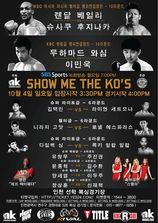 The month of September was a month with a few stand out days, October however looks mouth watering with numerous days of note. October 4th- Waseem Muhammad Vs Min Wook Lee The new month kicks off with an intriguing debut in South Korea. The bout in questions sees Pakistani debutant Waseem Muhammad (0-0) battle against Korean local Min Wook Lee (2-2) in a bout for the South Korean (KBC) Bantamweight title. On paper it looks a strange one but Muhammad is based in Korea and AK Promotions seem to have invested heavily in the former Pakistan amateur stand out. A win for Muhammad as we may see him become the first Pakistan born fighter of real note. Shusaku Fujinaka Vs Randall Bailey On the same card as Muhammad's debut we'll see an intriguing match up between Japan's Shusaku Fujinaka (12-5-2, 8) and American veteran Randall Bailey (45-8-0-1, 38), with the two men fighting for the WBO Asia Pacific Welterweight crown. Fujinaka isn't a great fighter but this bout has garnered real attention with Bailey, a former multi-time world champion, bringing genuine attention to the South Korean boxing scene. With Bailey contracted to AK Promotions this could end up being the first of many fights in Korea for the “KO King”.  October 12th- Ken Shiro Vs Rolly Sumpalong It's again minor title action that has our attention as Japan's fast rising Ken Shiro (4-0, 3) battles against unbeaten Filipino Rolly Sumalpong (9-0-1, 4) in a bout for the WBC Youth Light Flyweight title. We've been impressed by Ken Shiro since his debut, last year, and if he wins here we're expecting to see him fight for a Japanese title in early 2016. Sumalpong on the other hand has gone under our radar but did claim the WBC Eurasia Pacific Boxing Council Minimumweight title earlier this year and could himself be one to watch. Yoshitaka Kato Vs Ricky Sismundo On the same card as the Ken Shiro Vs Sumpalong fight is a potentially explosive Lightweight clash between Yoshitaka Kato (29-5-1, 9) and Ricky Sismundo (29-8-2, 13). This bout will likely go under-the-radar for many fans but it really does look like it could be a very special bout between two tough guys with under-rated power and under-rated skills. It is only scheduled for 8 rounds but it could end up being one of the best 8 round bouts of the year. 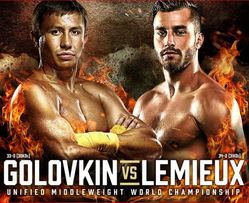 October 16th- Kohei Kono Vs Koki Kameda In a genuinely historic bout fans will get the chance to see two Japanese fighters fight for a world title on US soil, the first time such a bout has taken place in America. The bouts will see current WBA Super Flyweight champion Kohei Kono (30-8-1, 13) take on mandatory challenger Koki Kameda (33-1, 18) in what is likely to be a must win bout for both men. At 34 years old Kono will be unlikely to get another shot if he loses here to Kameda whilst a loss for Kameda would end a horror year for the Kameda clan, which has also seen Tomoki lose twice and Daiki suffer a huge shock loss. A loss for Koki and the Kameda's really will have lost the appeal they once had. October 17th- Gennady Golovkin Vs David Lemieux It's rare to have bouts with every ingredient, but we think we may have one here with hard hitting Kazakh king Gennady Golovkin (33-0, 30) facing off against Canadian destroyed David Lemieux (34-2, 31). Coming into the bout both men are major punchers and world champions, with Golovkin holding the WBA “super”, WBC “interim” and IBO titles whilst Lemieux is the IBF title holder. Potentially this has “FOTY” written all over it, though could be over in a blink of an eye given the power, and styles, of the men involved. It's been a while since a world title bout had us this excited, and we've got it admit it might be a while before we see another, equally as exciting, unification bout. Roman Gonzalez Vs Brian Viloria Teiken promoted Nicaraguan sensation Roman Gonzalez (43-0, 37) looks to continue his rise to the top of the sport as he faces Filipino-American Brian Viloria (36-4-0-2, 22) in what looks to be another brilliant bout. Coming in to this one Gonzalez is looking for the 3rd defense of his WBC Flyweight title whilst Viloria is fighting to remain relevant in the sport. A win here for Gonzalez helps cement his place atop the pound-for-pound rankings and could move us a step closer to the potential super fight between the Nicaraguan and Japan's Naoya Inoue whilst a win for Viloria will give his career one more run at the top and continue his up-and-down career. Donnie Nietes Vs Juan Alejo In another title bout fans will get to see talented Filipino Donnie Nietes (36-1-4, 21) make his US debut as he defends his WBO Light Flyweight title against little known Juan Alejo (21-3, 13) of Mexico. The bout, which is to take place in California, is part of ALA's first US show and is part of their move towards establishing their outfit as a world wide promotional outfit. A loss for Nietes would be disastrous for both the fighter and the promoter, but he hasn't been matched hard here and it'd be a shock to see Nietes given any real problems. 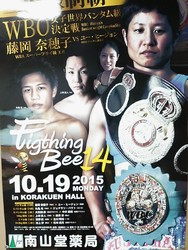 October 19th- Naoko Fujioka Vs Hee Jung Yuh Former 2-weight world champion Naoko Fujioka (13-1, 6) looks to continue her brilliant career as she attempts to claim a 3rd divisional world title. The exceptional Japanese fighter faces South Korean fighter Hee Jung Yuh (15-2, 6) in a bout for the WBO female Bantamweight title in what looks, on paper, like a brilliant fight. Aged 40 Fujioka is certainly “old” but she's in great shape and will be favoured over Yuh, who has won 14 in a row. Interestingly Yuh is married to another fighter Young Kil Bae, who set to fight for a world title himself in early November. Hikaru Marugame Vs Jonathan Baat On the same show as the Fujioka/Yuh bout is a great test for one of Japan's most under-rated prospects, Hikaru Marugame (5-0, 3). The talented Marugame steps up massively here as he takes on the highly experienced Jonathan Baat (30-6-3, 14), a Japanese based Filipino. A win for Marugame is expected, but Baat has scored notable upsets in the past, including popping 4 cherries and this is clearly a dangerous assignment for the 25 year prospect. October 22nd- Momo Koseki Vs Ayaka Miyao We get the second world title unification of the month a week after the Golovkin/Lemieux bout as WBC Atomweight champion Momo Koseki (20-2-1, 7) takes on WBA champion Ayaka Miyao (20-5-1, 4). This bout has been on the radar of fans for a while and is finally happening due to the fact both fighters have, essentially, run out of worth while opponents. We're expecting a lot of action here and although it won't be the cleanest action it should be sensationally exciting and amazing fun to watch. Interestingly the winner will claim a place in history as the first ever unified Atomweight champion. Satoshi Hosono Vs Hideyuki Watanabe Japanese Featherweight champion Satoshi Hosono (28-2-1, 20) returns to the ring for his second defence in the space of about 9 weeks af he takes on the tough and gutsy Takuya Watanabe (36-5-1, 12). Hosono, a multi-time world title challenger, is looking to record his 4th successive defence but will be up against a man who simple doesn't know how to quit. Watanabe came to our attention last year, in the wake of his “bloody” bout with Jaesung Lee and having seen that war we suspect he'll go through anything in an attempt to claim the title. This could be the perfect bout to close out the month. 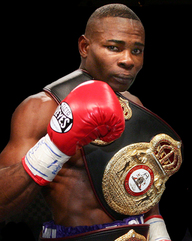 Courtesy of Top Rank Courtesy of Top Rank Cuban Guillermo Rigondeaux (12-0, 8) is a fighter who widely splits opinion. If you listen to HBO, Ring Magazine or even Bob Arum you'd assume that Rigondeaux was as boring as listening to paint dry. If you listen to fans of "the sweet science" however, Rigondeaux is generally seen as a supremely gifted fighter who has the ability to make good fighters look ordinary and ordinary fighters look garbage. Sure he may not have the most exciting bouts fight after fight but one thing about Rigondeaux we can all agree on is that he's a special boxer. Not necessary a great fighter but clearly the top Super Bantamweight on the planet right now. Unfortunately despite being the clear #1 at 122lbs it seems unlikely that HBO will willingly cover his next bout. With that in mind we started to wonder, what is next for the main who beat "The Filipino Flash" Nonito Donaire (31-2, 20)? Our conclusion was that "El Jackal" would be best off looking to the East for his next fight, as a number of top Super Bantamweights ply their trade over there, in fact there is so many match ups that Ringondeaux could be looking at if he traveled to either Macau or Japan that his career for the next few years could be as busy as he wanted it to be. The most logical option, if Rigondeaux does look for a fight in the Orient, would be against former 2-weight world champion Hozumi Hasegawa (33-4, 15). Hasegawa would almost certainly love a chance to claim a third divisional title, he has the ability to draw a crowd and is still, despite losses in recent years, seen as one of the top Japanese fighters. In terms of the fight it's self Hasegawa would not only bring some TV money and a crowd but also speed, in fact he may be the only fighter at 122lbs who can match Rigondeaux for pure hand speed. His style should actually suit Rigondeaux's counter punching and whilst we could get a chess match it would certainly be a high speed and exciting one with both men having questionable chins. Incidentally a Hasegawa victory over Rigondeaux would see him fulfilling one of his future goals in becoming a unified champion. 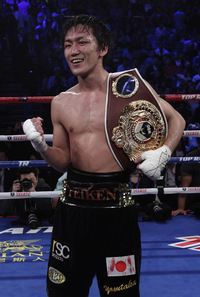 Courtesy of boxrec.com Courtesy of boxrec.com If a fight with Hasegawa couldn't be made for whatever reason there is a trio of Teiken fighters who would all likely be willing to fill a slot with the Cuban. Firstly you have former WBA champion Akifumi Shimoda (27-3-2, 12), who's highly ranked by both the WBA and WBO. Shimoda certainly wouldn't be given much of a chance by the boxing public but he is known by US fans and could well serve as a supposed "stay busy fight" for the Cuban. Secondly you have Yasutaka Ishimoto (22-6, 5), pictured, who has been on a recent Bob Arum promoted Macau show, where he scored a notable upset defeating former world champion Wilfredo Vazquez Jr. Ishimoto is ranked highly by the WBO and whilst he's unlikely to put up a great challenge he's a fighter who knows that a win would open up major paydays. The final Teiken option would be Shinsuke Yamanaka (19-0-2, 14), the current WBC Bantamweight champion. Of course Yamanaka would have to move up a division for the bout but Rigondeaux himself is a small Super Bantamweight. Although this is the least likely of the "Teiken Trio" it would certainly be a fight that would have fans across the globe very interested, arguably more so than the Hasegawa bout mentioned above. 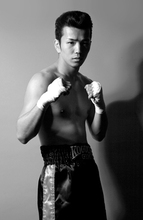 Courtesy of koguchi gym Courtesy of koguchi gym Aside from the 4 men mentioned above there is other options, in fact there is really huge selection of options. One possibility would be Shingo Wake (14-4-2, 7), the current OPBF champion. Of course Wake has a bout with Filipino Jhunriel Ramonal lined up for October, though after that a Rigondeaux bout would likely be his dream contest for early 2014. In terms of mass attention, perhaps the only fight in Japan that would be bigger than a Yamanaka/Rigondeaux contest would be Rigondeaux against Koki Kameda (31-1, 17). Unfortunately this is likely to be a total no-no for Kameda who has been selective with opponents and would need to step up both a weight class and an opposition class. Saying that though the attention this bout would get, with Kameda looking for a fourth divisional title would be massive. 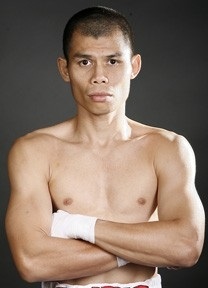 Courtesy of Golden Boy Promotions Courtesy of Golden Boy Promotions Of course it's not just Japan that has options and in fact Indonesia has a very, very interesting option, as long as Rigondeaux himself is willing to move up a division. A bout between Rigondeaux and Chris John (48-0-3, 22) in Jakarta or even Singapore, at Featherweight would be massive.Sure this is a highly unlikely bout but there would be major interest from fans across the globe wondering if Rigodeaux could compete at 126lbs and wondering if Chris John can genuinely beat a world level fighter. Unfortunately this bout really does have a number of stumbling blocks. Not only would money be an issue, or venue but also the dreaded "Golden Boy/Top Rank" rivalry which has already denied up a number of bouts. One thing is for certain, despite what Bob Arum and HBO seem to think, there are fights out there for Rigondeaux that can draw a real interest and there are options out there. Hopefully it's not long before Arum realises he can send Rigondeaux out to Macau or Singapore and try to capitalise on the busy Asian scene. If Rigondeaux's next fight isn't in the East, it's fair to say Arum has missed a trick. |
Thinking Out East
With this site being pretty successful so far we've decided to open up about our own views and start what could be considered effectively an editorial style opinion column dubbed "Thinking Out East" (T.O.E). Archives
March 2024
Categories
All
|
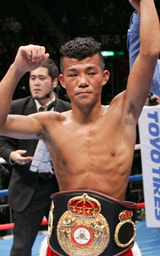
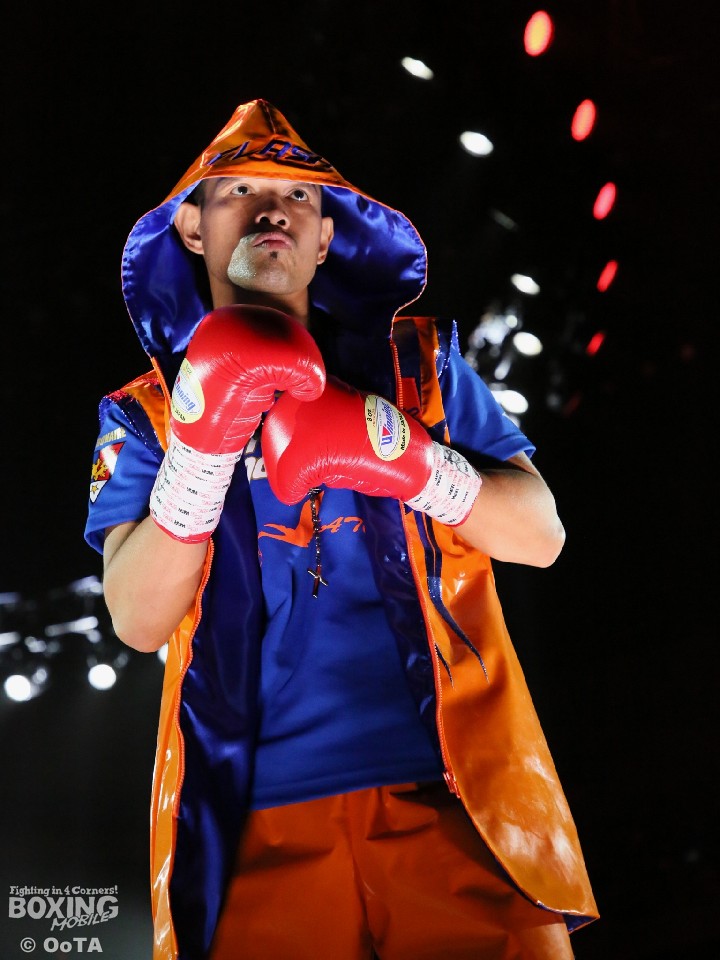
 RSS Feed
RSS Feed
